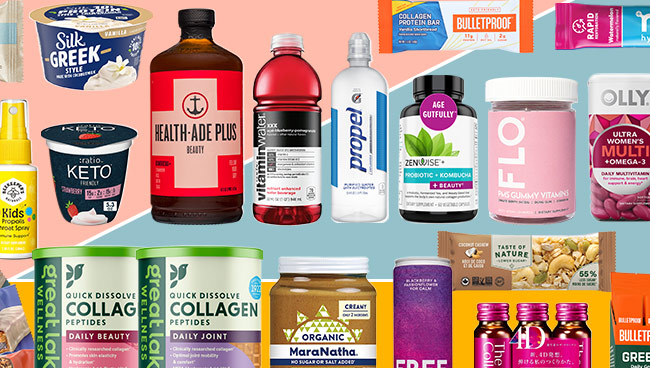Retailers and brands have responded enthusiastically to the shoppers’ preference for more wellness in their everyday products, with healthier options in food, personal care, beauty and health categories. But when the aisles deliver overwhelming choices, often with competing wellness promises on every shelf, has it become too much of a good thing? We have four remedies.
Managing Shoppability When the Aisles Become Too Much
Retail’s well-care inroads have expanded selection of healthy ingredients, but have made the choices more complicated.
Take bottled water. Today, bottled waters come with added vitamins, electrolytes, energy, collagen and melatonin. In some ways, water is starting to look like vitamins; but without a reason to add collagen or melatonin to water, how is a shopper supposed to choose what’s best? The mood quickly goes from well-intended to exasperation.
Nearly all product categories have introduced wellness benefits. U.S. retailers are expected to ring up close to $170 billion in these goods in 2022. Consider how some of these categories look.
- Non-alcoholic beverages. This market, with revenue of $445 billion in the U.S., according to Statista, is expected to grow by nearly 5% a year. No surprise: When you walk the aisle in any store, there are zero-sugar beverages, real-juice waters, healthy sodas, gut-healthy soft drinks infused with prebiotics, probiotics or plant fiber, and non-alcoholic beer for those who feel it is healthier to abstain. The conundrum for shoppers is that other choices don’t go away; more are added and often at premium prices.
- Snack bars. From breakfast to performance bars, choices include brain-boosting nutrients, women’s health, kids’ health, gluten-free, vegan, high carb, low calorie, keto. The snack bar market generated $6.5 billion in U.S. sales in 2021, and is projected to grow by 2% a year.
- Vitamins and supplements: In 2021, U.S. sales in this category rose by more than 11% over 2022, exceeding $9 billion. The features are growing as well, with aids for muscle recovery, sleep, hair strength, fruit and vegetable nutrition, keto diets, organic preferences and more.
- Yogurt aisle: Thanks to the addition of non-dairy nuts, oat, soy and coconut, the yogurt case is bursting. The category exceeded $7.2 billion in sales in the U.S. in 2021 and expected to exceed $100 billion globally in 2022.
4 Steps for Reducing Stress-Inducing Clutter
The future of the wellness industry depends on how well retailers and brands can provide an all-encompassing selection and give shoppers the right information to choose.
Here are four guidelines for providing WELL’s wide range of options in a user-friendly format, based on our shopper research.
- Make the category easier to navigate. In the store or online, it is key that signage designates different sub-segments, such as low sugar, gut-healthy, with or without alcohol or healthy options for people with conditions. Explaining why products are healthier can further demystify why shoppers should pay a premium for kombucha, coconut water or pressed juice. Beauty provides a good example of separating clean/free-from products from others.
- Talk through the packaging. Brands can delineate their variety of wellness attributes in the package design, by color-coding or using images that communicate the benefits, such as better sleep, more energy or improved immune system. The key is creating visual cues that underscore the product’s health promise.
- Stock WELL in unexpected places. Some consciously wellbeing shoppers may never enter the carbonated beverage aisle but would buy a fruit-infused sparkling water if they knew it was available. Displays at checkout, online order pickup areas or the pharmacy/in-store health clinic make for easier discovery of wellness solutions.
- Build wellness for online shoppers. The same elements of education that apply to the aisle can be extended online through organized presentation, such as an easy-to-follow grid. Wellness-direct subscriptions also help establish repeat-purchase patterns.
At its pace of growth, the wellness category will likely expand from a predicted $170 billion in U.S. sales in 2022 to more than $200 billion by the end of 2023. History supports that shoppers will pay more for healthier choices, but don’t expect them to pay the price of overwhelming confusion. Retailers and brands – you must sort that out.
Want to know how WSL can help your brand or retail company more easily meet shoppers in the Big Business of WELL? Visit our dedicated microsite here.


